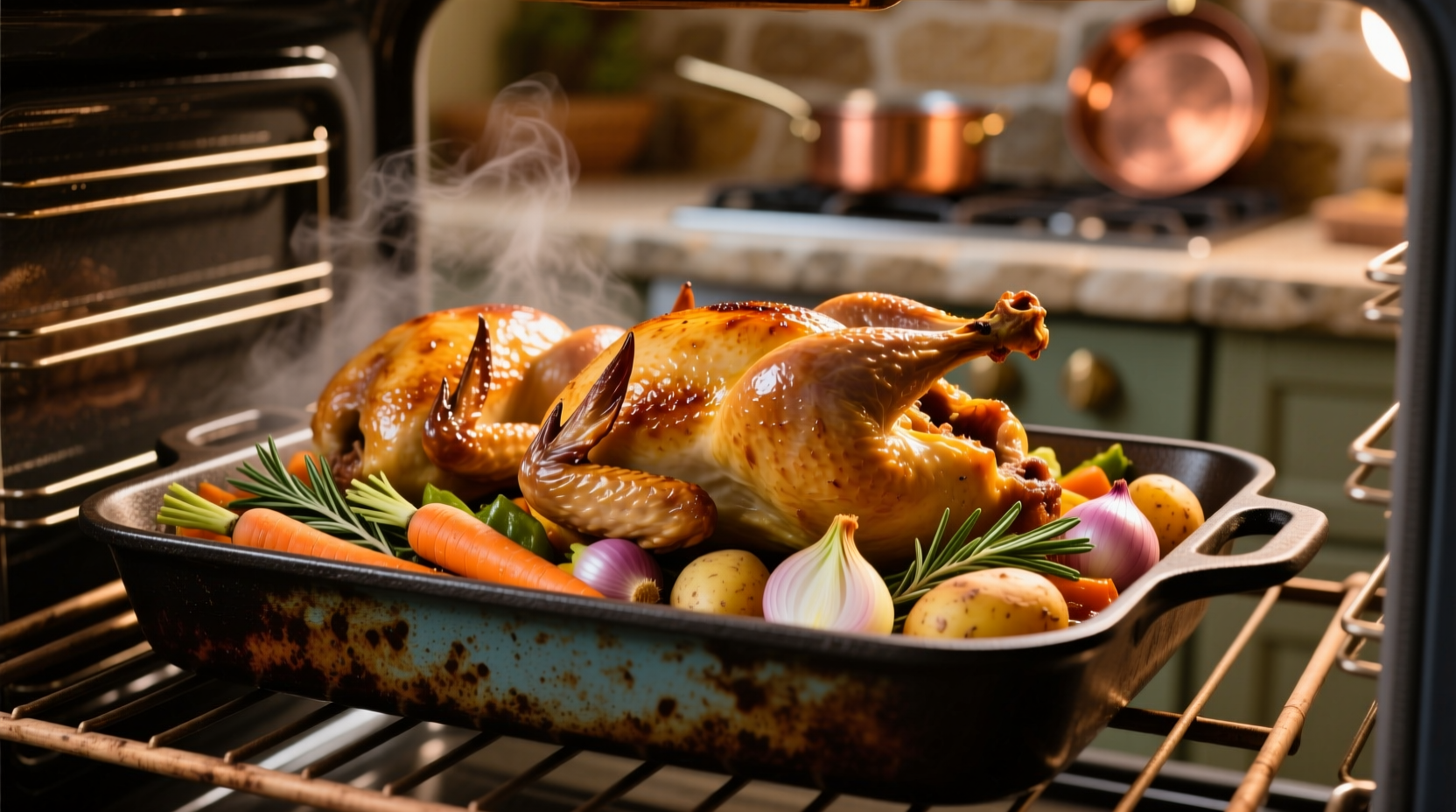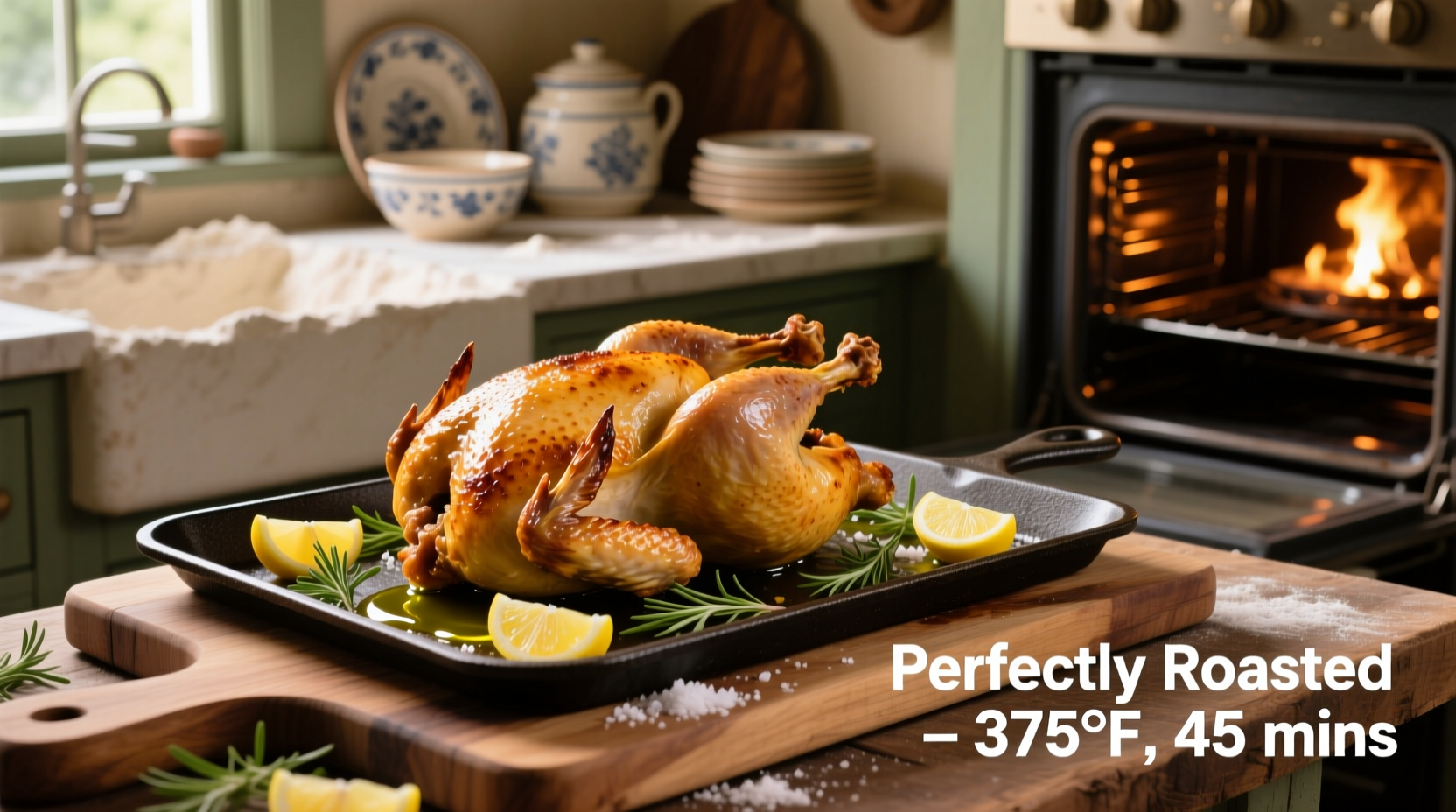Why This Method Works for Perfect Oven-Roasted Cornish Hens
Mastering how to cook Cornish hens in the oven requires understanding their unique characteristics. These small game birds (typically 1-1.5 pounds each) cook faster than regular chickens but need precise temperature control to avoid drying out. The USDA Food Safety and Inspection Service confirms that poultry must reach 165°F internally to eliminate harmful bacteria like salmonella (USDA FSIS).
Step-by-Step Preparation: Setting Up for Success
Proper preparation makes the difference between dry, unevenly cooked birds and succulent perfection. Follow these professional kitchen techniques:
Dry Brining for Maximum Flavor and Crisp Skin
At least 12 hours before cooking, pat the Cornish hens completely dry with paper towels. Sprinkle 1 teaspoon of kosher salt per pound under the skin and inside the cavity. Refrigerate uncovered on a wire rack. This process, recommended by the American Egg Board for poultry preparation, draws out excess moisture while seasoning penetrates deeply.
Temperature Equilibrium is Critical
Remove hens from the refrigerator 45-60 minutes before cooking. Cooking cold poultry leads to uneven results - the exterior dries out while the interior remains undercooked. This technique aligns with food science principles documented by the University of Minnesota Extension regarding protein behavior during cooking.
| Cooking Temperature | Approximate Time | Best For |
|---|---|---|
| 375°F (190°C) | 45-55 minutes | Standard method for juicy meat and crisp skin |
| 425°F (220°C) | 35-45 minutes | Crispier skin, requires careful monitoring |
| 350°F (175°C) | 55-65 minutes | More forgiving for beginners |
Perfect Oven Cooking Technique
Preheating and Pan Selection
Preheat your oven to 375°F (190°C) with the rack positioned in the center. Use a roasting pan or cast-iron skillet - materials that retain and distribute heat evenly. Professional kitchens prefer heavy-bottomed pans because they prevent hot spots that cause uneven browning.
Trussing for Even Cooking
Tie the legs together with kitchen twine and tuck wing tips under the body. This compact shape ensures uniform cooking throughout the bird. According to culinary research from the Culinary Institute of America, properly trussed poultry cooks 15-20% more evenly than untied birds.
The Roasting Process
- Place hens breast-side up on a wire rack in the roasting pan
- Rub 1 tablespoon of softened butter or oil under the skin and over the surface
- Insert an oven-safe thermometer into the thickest part of the thigh
- Roast for 45-55 minutes until thermometer reads 165°F (74°C)
- Rest for 10 minutes before carving

Proven Troubleshooting Solutions
Problem: Pale, Soft Skin
Solution: Increase oven temperature by 25°F during the last 15 minutes of cooking. Alternatively, finish under the broiler for 2-3 minutes watching carefully to prevent burning. The Maillard reaction (browning process) requires both sufficient heat and dry surface conditions.
Problem: Uneven Cooking
Solution: Rotate the pan 180 degrees halfway through cooking. If one side consistently browns faster, position that side away from the oven's hottest element. Most home ovens have hot spots that require this adjustment.
Serving and Storage Guidelines
Serve immediately after the 10-minute rest period for optimal juiciness. Pair with roasted root vegetables or a simple green salad. Leftovers should be refrigerated within 2 hours of cooking in airtight containers. Properly stored, cooked Cornish hens remain safe to eat for 3-4 days according to USDA guidelines.
Reheating Without Drying Out
For best results, reheat in a 325°F oven until internal temperature reaches 165°F. Add a splash of broth to the pan and cover loosely with foil. Microwave reheating often dries out the delicate meat - if necessary, use 30-second intervals at 50% power with broth added.











 浙公网安备
33010002000092号
浙公网安备
33010002000092号 浙B2-20120091-4
浙B2-20120091-4